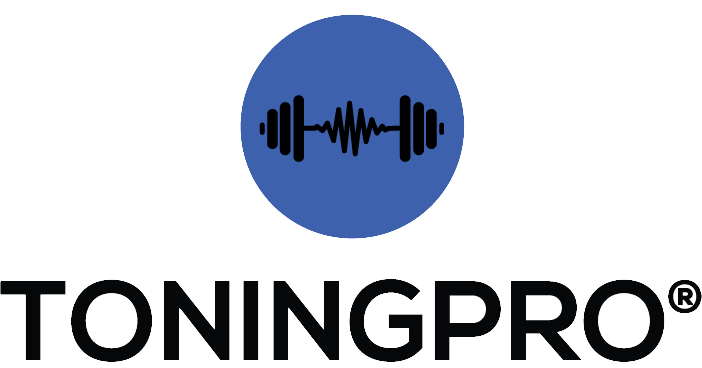
Ems And Injury Recovery: Why Electric Muscle Stimulation Is A Game Changer In Rehab

Injury recovery can be a long and often frustrating process, but with advancements in rehabilitation technologies, recovery times are shortening and outcomes are improving. One such innovation is Electric Muscle Stimulation (EMS). This game-changing technique has proven highly effective in accelerating recovery and enhancing the rehabilitation process. EMS uses electrical impulses to activate muscles and promotes healing by increasing circulation, reducing inflammation, and preventing muscle atrophy. Moreover, it offers injured individuals a way to regain strength and mobility faster, while minimizing the risks of re injury. In this blog, we’ll explore how EMS works, its benefits in injury recovery and why it’s becoming an essential tool in modern rehabilitation programs.
How EMS Helps In Injury Recovery
Promotes Circulation And Reduces Inflammation
EMS enhances blood circulation to injured tissues which is essential for accelerating recovery. The electrical impulses stimulate muscles that dilate the blood vessels and increase blood flow to the affected area. This helps deliver more oxygen and nutrients to the tissues and promotes faster healing. Additionally, EMS can reduce inflammation, further help in decreasing swelling and alleviating pain, and also speed up the recovery process.
Prevents Muscle Atrophy
EMS is highly effective in preventing muscle atrophy during periods of immobilization or rest, such as after surgery or injury. By stimulating the muscles, EMS helps maintain muscle activity, even when the individual is unable to perform traditional exercises. This stimulation reduces the risk of muscle weakening and loss of mass caused by reduced movement or inactivity. EMS ensures a quicker recovery and better functional outcomes so the patient can resume regular physical activity.
Speeds Up Tissue Repair
EMS plays a crucial role in speeding up tissue repair by stimulating collagen production. The electrical impulses from EMS promote the formation of collagen fibers, which are essential for repairing damaged tissues such as muscles, tendons, and ligaments. This enhanced collagen synthesis helps accelerate the healing process and overall reduces recovery time. Additionally, EMS stimulates the natural healing processes in tendons, ligaments, and muscles, and ensures a more efficient recovery from injuries.
Specific Injury Types Benefiting From EMS

Muscle Strains and Tears: EMS aids in muscle recovery from strains and tears by rebuilding strength and preventing stiffness. It stimulates muscle contractions, improves blood circulation, and accelerates healing. This helps maintain muscle tone, reduce atrophy, and alleviate tightness, and overall speed up the recovery process.
Ligament and Tendon Injuries: EMS supports recovery from ligament and tendon injuries by promoting targeted muscle reactivation and enhancing flexibility. The electrical impulses help stimulate surrounding muscles, and this activation aids in restoring proper function to the injured area. EMS accelerates the rehabilitation process and helps individuals regain mobility more quickly.
Joint Injuries (e.g., ACL recovery): EMS is highly effective in enhancing stability and strength after joint surgeries like ACL recovery. By stimulating the muscles around the joint, EMS helps improve muscle activation, which is crucial for supporting and stabilizing the joint during the healing process.
Chronic Pain or Overuse Injuries: EMS helps alleviate chronic pain and muscle fatigue by delivering electrical impulses that stimulate the muscles and nerves. This reduces pain by blocking pain signals and promoting the release of endorphins, the body’s natural painkillers.
EMS In Post-Surgery Rehabilitation
EMS plays a significant role in accelerating recovery after surgeries like joint replacements, tendon repairs, or fractures. EMS helps reduce recovery time and supports faster tissue healing by stimulating muscles and promoting blood circulation. It also enhances post-surgical mobility by keeping muscles active, preventing stiffness, and improving flexibility.
Enhancing Muscle Re-Education
Strengthening Weak Muscles
Benefits Of EMS For Injured Athletes
EMS offers several key benefits for injured athletes and helps them return to training and competition more quickly. EMS accelerates recovery and reduces downtime between intense workouts by promoting faster healing through improved circulation and tissue regeneration. This allows athletes to maintain training intensity while minimizing the risk of overexertion. Additionally, EMS aids in rehabilitation by stimulating muscles and helps athletes in rebuilding strength and flexibility while avoiding further injury.
Precautions And Considerations
Before using EMS, individuals with certain medical conditions should consult healthcare professionals
For safe use during rehabilitation, it's essential to follow recommended guidelines, including adjusting the intensity of the stimulation to avoid discomfort or muscle strain.
Proper electrode placement and frequency settings ensure effectiveness while preventing injury. Lastly, overuse of EMS can lead to muscle fatigue or imbalance, so it should be used in moderation and under a structured recovery plan to support it.
